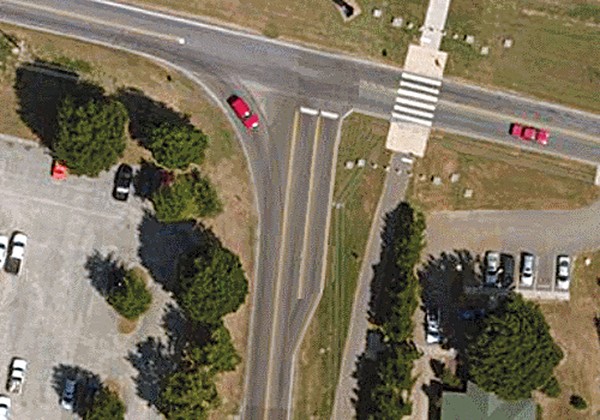Four new bicycle repair stations are now ready for cyclists around Shelby Farms Park, further evidence of the city’s deepening investment in bike infrastructure.
The stations are about five feet tall and feature a bike pump, a hands-free bicycle mount, and the tools required for basic repairs. Not a bike mechanic? Get out your smartphone and scan a QR code on the side of the station for step-by-step instructions. The stations are all free to use.
 Toby Sells
Toby Sells
Bike repair station at Farm Road and Mullins Station
The repair stations are located at the Shelby Farms Greenline trailhead (at Farm and Mullins Station), the Tour De Wolf trailhead, the Germantown Greenway trailhead, (close to the corner of Wolf River Boulevard and Germantown Parkway), and at the Wolf River pedestrian bridge (near Shady Grove and Humphreys).
Each of the Dero Fixit stations retail at $800 on the Dero website. The Shelby Farms project was funded mainly through a partnership between Shelby Farms Conservancy and Conway Services, a Memphis air-conditioning and plumbing company. The company’s owner, John Conway, said in a statement that his involvement was to simply make “our city be a healthier and more pleasant place to live.”
Though the stations aren’t a multi-million-dollar blockbuster project, they are part of a larger, fundamental change in the way Memphis leaders are thinking about transportation. Miles of bike lanes are now striped throughout the city. The Harahan Bridge project will carry cyclists and pedestrians across the Mississippi River next year. The long-awaited Mid-South Regional Greenprint plan proposes 500 miles of new greenways to connect Shelby, DeSoto, Crittenden, and Fayette counties.
“We want to do anything we can to encourage pedestrian access to [Shelby Farms Park],” said Cameron Mann, manager of corporate development and communications for Shelby Farms Conservancy. “Prior to the [Shelby Farms Greenline], the only access was with a motorized vehicle. So, the Greenline was a game-changer for us.”
Mann said the conservancy began working on the project about a year ago. The planning process included interviews with leaders in the bicycling community, like those with bike stores, repair shops, and bicycle clubs. They all wanted repair stations, Mann said, for a more assuring ride in case their chain fell off or tire went flat.
Clark Butcher, owner of Midtown’s Victory Bicycle Studio, said he sees hopeful symbolism in the stations.
“It’s a permanent fixture,” Butcher said. “The things are anchored to the ground. They aren’t going anywhere.”
Bike repair stations have popped up in cities and college campuses across the country in recent years. Leaders have embraced bicycling culture and hope to engrain it in the overall transportation mix of their communities.
Stations similar to those in Shelby Farms Park are now in place in cities from New Haven, Connecticut, to Salem, Oregon. They’re also on college campuses from Rutgers to Texas Tech. Repair stations are already in place in North Little Rock along the Arkansas River Trail and close to the Big Dam Bridge.
 Courtesy of Sierra Club
Courtesy of Sierra Club 